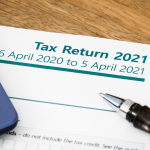Introduction
Navigating the complexities of income tax can be daunting. Understanding which income tax bracket you fall into is crucial for effective financial planning and can help you make more informed decisions about your earnings and investments. In this comprehensive guide, we will explore the income tax brackets in the UK, providing you with the knowledge to better understand and manage your tax responsibilities.
Section 1: What Are Income Tax Brackets?
Income tax brackets are ranges of income that are taxed at different rates. The UK uses a progressive tax system, meaning that the rate of tax increases as your income does. This system is designed to ensure fairness, with those earning more contributing a higher percentage of their income in taxes. The main goal is to balance the tax burden across different income groups effectively.
Section 2: Detailed Overview of Current UK Income Tax Brackets
For the current tax year, the UK income tax brackets are divided as follows:
- Personal Allowance: Up to £12,570 – 0% tax. This is the amount of income not subject to tax.
- Basic Rate: £12,571 to £50,270 – 20% tax. Most individuals will fall into this bracket.
- Higher Rate: £50,271 to £150,000 – 40% tax. This bracket applies to higher income earners.
- Additional Rate: Over £150,000 – 45% tax. This is the highest income bracket and affects top earners.
Each of these brackets corresponds to a different tax rate, which applies only to the income within that bracket, not to the entire income.
Section 3: Factors Influencing Changes in Your Tax Bracket
Several factors can influence which tax bracket you fall into:
- Varying Income Levels: Promotion, bonuses, or any other increase in earnings can push you into a higher tax bracket.
- Different Types of Income: Income from self-employment, investments, or rental properties might be taxed differently.
- Tax Reliefs and Deductions: Contributions to pensions, donations to charity, or allowable business expenses can reduce your taxable income.
Understanding these factors can help you predict changes in your tax obligations and plan accordingly.
Section 4: Practical Financial Management Advice
Managing your finances with an understanding of tax implications can lead to significant savings. Here are some tips:
- Utilize Allowances and Reliefs: Always use your full Personal Allowance and other tax reliefs available to you.
- Tax Efficient Investments: Consider investments like ISAs or pensions that can grow tax-free or tax-deferred.
- Professional Advice: Consulting with a tax professional can provide personalized strategies to minimize your tax liability.
Section 5: Hypothetical Scenarios and Examples
To illustrate, let’s consider two scenarios:
- Scenario One: An employee earning £28,000 annually falls into the Basic Rate bracket. After the Personal Allowance, they are taxed at 20% on £15,430, leading to a tax payment of £3,086.
- Scenario Two: A self-employed individual earns £130,000 annually. They fall into the Higher Rate tax bracket for a portion of their income. They pay 20% on £37,700 and 40% on £79,730, totaling £35,262 in tax, excluding other potential deductions.
These examples show how different incomes interact with the tax brackets.
Section 6: Additional Resources and Tools
For further information, the HM Revenue and Customs (HMRC) website provides tools and calculators to help estimate your tax bracket and plan for the tax year. Additionally, websites like TAX CALCULATOR UK and offer guides and advice for financial planning and tax.
Conclusion
Understanding your income tax bracket is more than just knowing what you owe. It’s about strategically managing your finances in a way that aligns with your financial goals and minimizes your tax liability. With the right knowledge and tools, you can effectively navigate the tax landscape, ensuring you are well-prepared for the future.
This guide serves as a starting point for those looking to deepen their understanding of UK income tax brackets and how to manage their finances accordingly. For more tailored advice, consider seeking the expertise of a tax professional.







